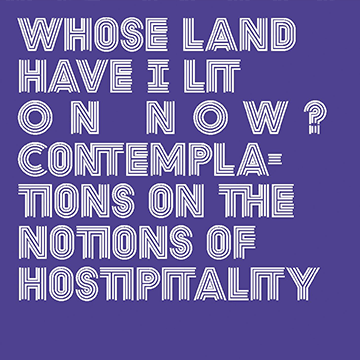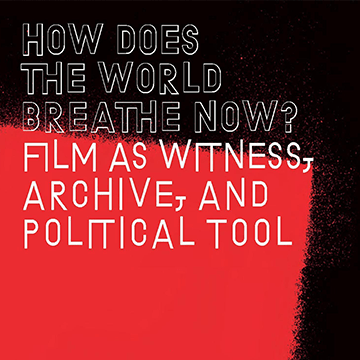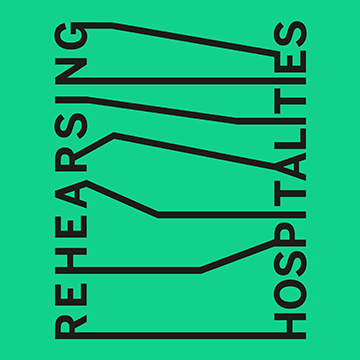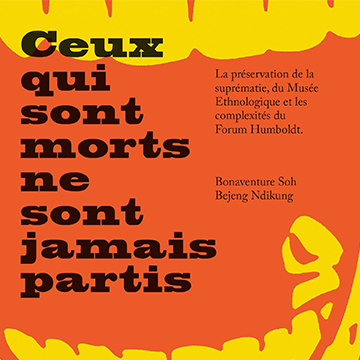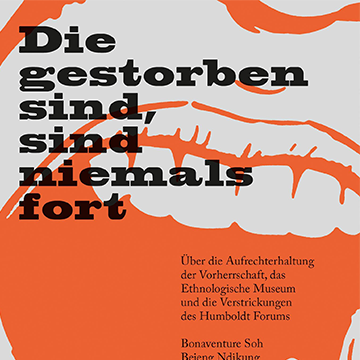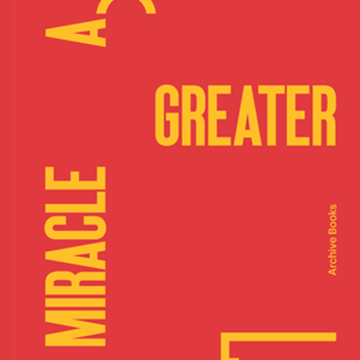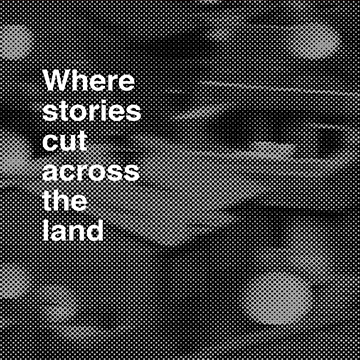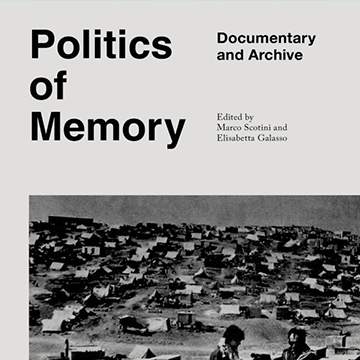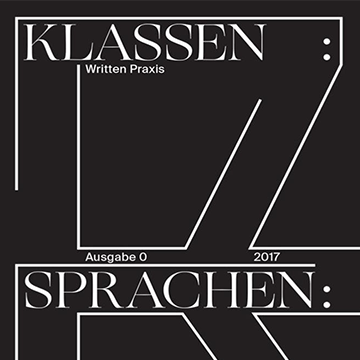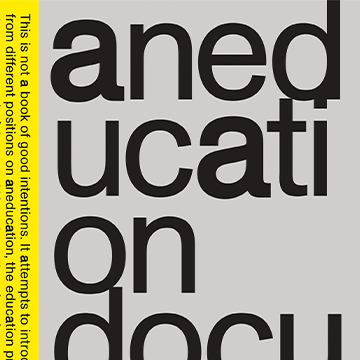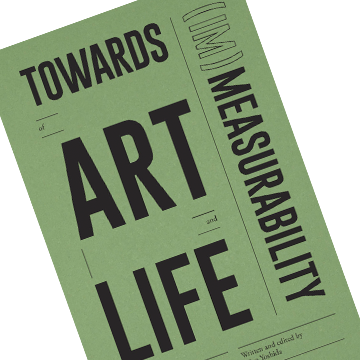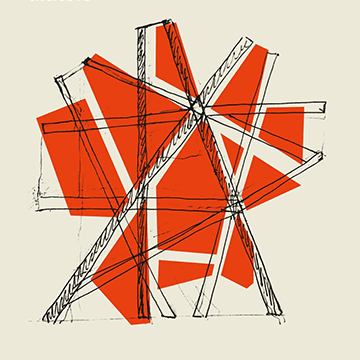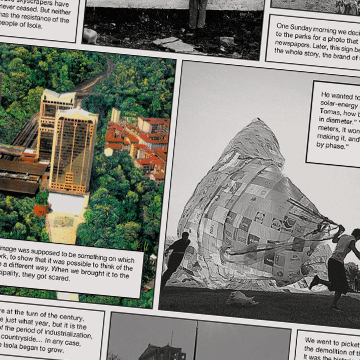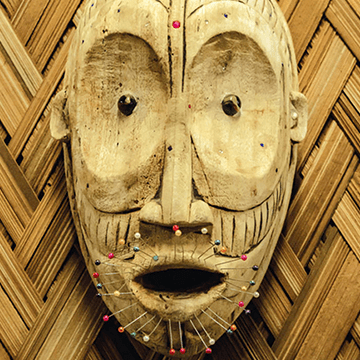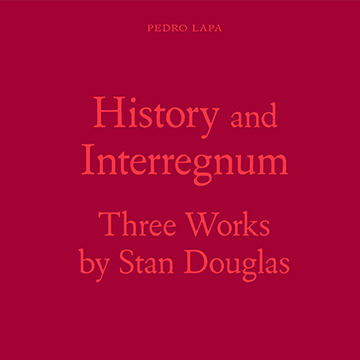The unlikely seemed possible in the summer of 2015, as thousands of immigrants from mostly Syria made their way to Germany and Angela Merkel made the statement “Wir schaffen das” (We can do it/ we can cope with it). A German's venture into open hospitality was being witnessed as the country celebrated its newfound “Willkommenskultur.”
Tag: Art
How Does The World Breathe Now?
The film series conceived of by SAVVY Contemporary, which ran from September 2016 through March 2018, was a response to our own dismay at the continued injustices that the world faces. Each week SAVVY invited a different speaker who would choose a film that she or he felt answered, or asked more questions of, the question, “how does the world breathe now?”
Rehearsing Hospitalities. Companion 1
Upon what kind of power structures of knowledge and knowing are contemporary art and artistic institutions dependent? Do practitioners in the art field reproduce oppressive Western epistemic paradigms through artistic practices and institutional structures, and if so, is there space for emancipatory ways of knowing? What are the ways that intersectional subjectivities open up new epistemic processes within the artistic field? These are among the questions and considerations that provide a critical lens for the 2019 Rehearsing Hospitalities programme.
Ceux qui sont morts ne sont jamais partis
L’institution du musée ethnologique semble traverser une véritable crise d’étouffement. Les mets délicats acquis, ou plutôt cooptées, pour ainsi dire ingérées par la majorité de ces musées, semblent avoir été dépistés de la route vers l’œsophage et s’être coincés dans les voies respiratoires. Toutes ces choses y sont coincées depuis l’acquisition, le pillage, de ces objets. En somme, depuis l’impitoyable déracinement des biens culturels qui perdure jusqu’à nos jours dans les anciennes colonies hors d’Europe. Un essai en 12 actes sur la préservation de la suprématie, le Musée Ethnologiques et les complexités du Forum Humboldt.
Die gestorben sind, sind niemals fort
Die Institution des Ethnologischen Museums scheint sich in einer ernsten Krise des Erstickens zu befinden. Die Delikatessen, welche die meisten solcher Museen meist unter zweifelhaften Bedingungen erwarben, mit anderen Worten genossen und verschluckt haben, scheinen kollektiv den Weg in den Oseophagus verpasst zu haben und blieben stattdessen im Atmungsapparat stecken. Sie hängen dort schon so lange fest, wie die Geschichte von Massensammlungen, Erwerbungen, Plünderungen; so lange wie der rücksichtslose und fortwährende Abbau von Kulturgut in den ehemaligen Kolonien außerhalb Europas bereits andauert.
A Greater Miracle of Perception
A Greater Miracle of Perception explores how miracle making – making the impossible possible – is reflected in artistic practices today. The publication accompanies the exhibition by The Miracle Workers Collective at the Finnish Alvar Aalto Pavilion in the framework of the 58th International Art Exhibition – La Biennale di Venezia.
Where stories cut across the land
This is not an artist’s book about borders. Rather, it is an artist’s book about overcoming the influence of politics on the land within the borders of unrecognized or semi-recognized states. It is a document of the fragmented symptoms of the “Bosnian pot” character of governance, in which all components simultaneously complement and eliminate each other.
Politics of Memory
The anthology Politics of Memory aims to investigate the document as such, as an objective trace left by events, as material proof or the creation of reality – the strategies with which they transform a state of memory into State memory, those by means of which a historical removal is enacted, those, ultimately, in which there is an attempt to challenge permanent or temporary amnesia, opening up to the future. The artists and filmmakers contributing to this publication represent the most advanced area on an international scale of a research that inaugurates a new relationship between artistic practices and the documentary.
Klassensprachen
Instead of passing off art as a model for a better politics, we wish to test it for the signatures, the markers and forms of these deeply antagonistic relations of which art itself is a material part: we are concerned with art as a class language, as well as with class languages in art; with art’s room for maneuver as well as with its limits and restrictions, curatorially, in writing and debate.
Aneducation • documenta 14
Forty-eight entries are organized alphabetically as a lexicon, each written by various members of the aneducation team and documenta 14 Chorus, as well as curators, artists, and educators who contributed to the program. The publication’s many points of departure present just as many desires for other sites of learning. Cross references among the entries show the deep relationships that existed—and continue to deepen—between the methods, programs, and locations of aneducation.
Eine Erfahrung • documenta 14
Forty-eight entries are organized alphabetically as a lexicon, each written by various members of the aneducation team and documenta 14 Chorus, as well as curators, artists, and educators who contributed to the program. The publication’s many points of departure present just as many desires for other sites of learning. Cross references among the entries show the deep relationships that existed—and continue to deepen—between the methods, programs, and locations of aneducation.
Towards (Im)Measurability of Art and Life
Towards (Im)Measurability of Art and Life gathers together various stories, practices, and essays about measurement that embrace paradox, contradiction, and humour. The book creates and introduces incidents of ideas, conceptual methods, acts, and processes of measurement that dwell in a conceptual transition between science (technology) and everyday life. When measurement is viewed as a practice, it is important to recall that data processing, especially visualisation, actually necessitates many aesthetic decisions.
raumlabor
Cantiere Barca is an experimental art and architecture project for public space that, between 2011 and 2013, involved dozens of people in actions of construction and place-making under the guidance of the architecture collective raumlaborberlin, in a neighbourhood at the farthermost northeastern corner of the city of Turin. In the years of endless crisis – in the economy, in politics, and in the environment – Cantiere Barca has fulfilled the demand for the identity and social recognition of a group of residents, breathing life into a workshop of shared creative practices and an exchange of knowledge, thus undertaking a journey from the urban periphery to the MoMA in New York. Cantiere Barca is also a case study, which has wit- nessed both success and failure, to ponder on the meaning of such concepts as collective, community, the common good, participation, responsibility, utopia, and future.
Fight-Specific Isola
Fight-Specific Isola traces the long history of the Isola area of Milan and the organic, spontaneous progress of the Isola Art Center over the past 12 years. Featuring texts and many images, the book tells the story of an artistic and urban transformation, led by artists, who often had to invent tools and concepts along the way. This publication serves as an example of how to act on the ground in today’s urban condition. Different narratives of history, artistic intervention and action allow the reader to trace the complex idea of collectivity, solidarity and fight-specificity. Testing new terms such as dirty cube and dispersed center this book shows a possible way to respond to the constant pressure of neoliberal development and gentrification.
The White Hunter
The White Hunter, African Memories and Representations is a publication produced on the occasion of the eponymous exhibition produced by FM Centre for Contemporary Art in Milan. This book is not only a catalogue on the exhibition, but it is rather a context in which the subjects of the show, are interrogated in another form.
History and Interregnum
History and Interregnum looks at the relationship between history and fiction through the practice of re-enactment, as seen in three works by Stan Douglas. The Secret Agent (2015), Disco Angola (2012) and Luanda-Kinshasa (2013) all draw upon the same historical period, which saw the emergence of different universalist and multicultural hopes for a transformed world. The recent history of Portugal, namely the Carnation Revolution of 1974 and decolonisation, and manifestations of culture such as jazz-rock, disco, funk and afrobeat, contribute to a political and multicultural emancipation dreamed of in those times, but ultimately eclipsed by new configurations of power. This book is a consideration of a politics of means, taking as its starting point the idea of a state of interregnum exemplified by these moments, exploring it in the light of artistic devices used by Stan Douglas.
